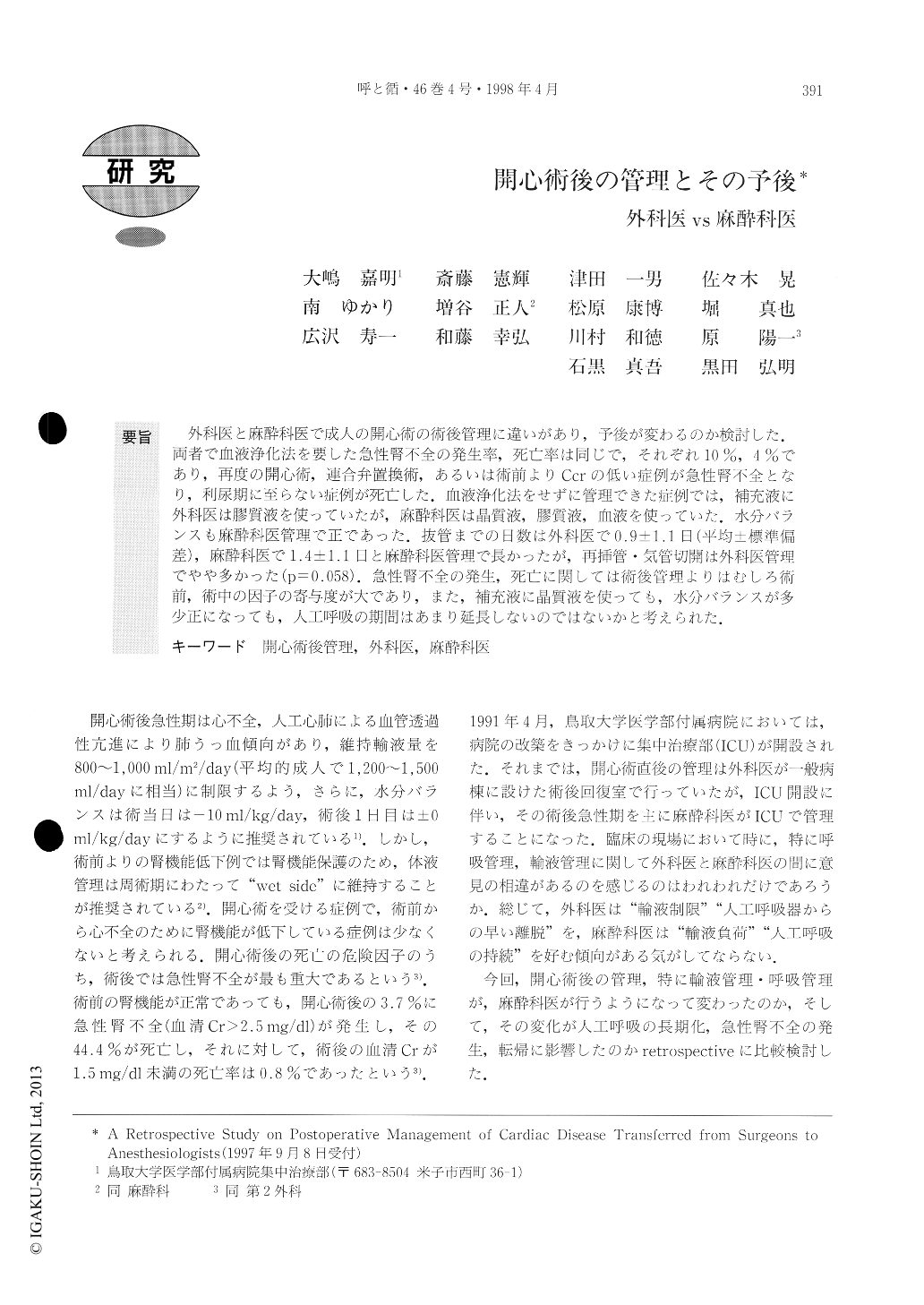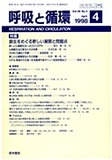Japanese
English
- 有料閲覧
- Abstract 文献概要
- 1ページ目 Look Inside
外科医と麻酔科医で成人の開心術の術後管理に違いがあり,予後が変わるのか検討した.両者で血液浄化法を要した急性腎不全の発生率,死亡率は同じで,それぞれ10%,4%であり,再度の開心術,連合弁置換術,あるいは術前よりCcrの低い症例が急性腎不全となり,利尿期に至らない症例が死亡した.血液浄化法をせずに管理できた症例では,補充液に外科医は膠質液を使っていたが,麻酔科医は晶質液,膠質液,血液を使っていた.水分バランスも麻酔科医管理で正であった.抜管までの日数は外科医で0.9±1.1日(平均±標準偏差),麻酔科医で1.4±1.1日と麻酔科医管理で長かったが,再挿管・気管切開は外科医管理でやや多かった(p=0.058).急性腎不全の発生,死亡に関しては術後管理よりはむしろ術前,術中の因子の寄与度が大であり,また,補充液に晶質液を使っても,水分バランスが多少正になっても,人工呼吸の期間はあまり延長しないのではないかと考えられた.
In April 1991, Tottori University Hospital opened a 4 -bed multidisciplinary intensive care unit (ICU), princi-pally dealing with post surgical patients requiring mechanical ventilatory support. Postsurgical cardiac patients were cared for by their cardiovascular surgeons before the opening of the ICU, now staffed by a group of anesthesiologists. The outcome of disease, fluid therapy and respiratory management for postsurgical cardiac patients during the 2 years before the opening of the ICU (pre-ICU group, n=50) was compared to that during the 2 years after the opening (ICU group, n=50). Data were retrospectively collected from adult patients hav-ing elective cardiac surgery from April 1989 to March 1992, exclusive of data from those who died or receivedreoperation within 48 hrs after the first operation. Five patients required dialysis in both groups due to acute renal failure arising from a previous cardiac operation, multiple valve procedures or preoperative renal dysfunc-tion. In both groups, 2 of the 5 patients died despite prolonged dialysis support, and the surviving 3 recover-ed sufficient kidney function to discontinue dialysis. The remaining 45 patients did not require dialysis in either group. The ratio of atrial septal defect repair was significantly (p = 0.03) lower in the ICU group (4/45) than in the pre-ICU group (12/45). The ratio of aortic valve replacement procedures was significantly (p= 0.03) higher in the ICU group (10/45) than in the pre-ICU group (3/45). The cardiopulmonary bypass times and aortic cross-clamp times were significantly longer (p= 0.005 and 0.04, respectively) in the ICU group than in the pre-ICU group. For postoperative fluid resuscitation,the ICU group received both crystalloid and colloid fluid, while the pre-ICU group received colloid fluid only. The ICU group showed positive fluid balance on postoperative day 1. The duration of intubation (mean± SD) was significantly longer (p=0.02) in the ICU group (1.4 ±1.1 days) than in the pre-ICU group (0.9±1.1 days). No patient required tracheostomy in the-ICU group, while 4 patients were reintubated and required tracheostomy in the pre-ICU group (p =0.058). Acute renal failure was a frequent and important contributing factor leading to death in postsurgical cardiac patients. Ventilatory weaning was not influenced by the type of fluid for postoperative fluid resuscitation.

Copyright © 1998, Igaku-Shoin Ltd. All rights reserved.


